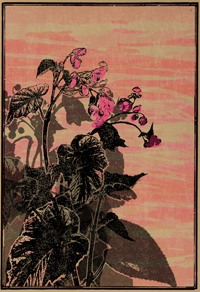"In the natural system of plant regeneration in Malaysia, lallang (Imperata cylindrica) and ferns are usually the first plants to colonize an exposed patch; wind delivered seeds and spores set quickly and cover the entire area, anchoring the soil and providing an acceptable environment for the next wave of colonists, like senduduk, or Melastoma." from
Rimbun Dahan
"It is an important nesting material for birds such as the Baya Weaver (Ploceus philippinus). These birds make use of the long blades of grass to construct symmetrical hanging homes for which they are known. Birds such as the Olive-backed Sunbird (Nectrinia jugularis) also use the white long fine hairs of the fruits to line their nests. Lallang patches can also be nesting sites. Slaty-breasted Rails (Rallus striatus) are known to have nested among lallang." from
Wetlands
























